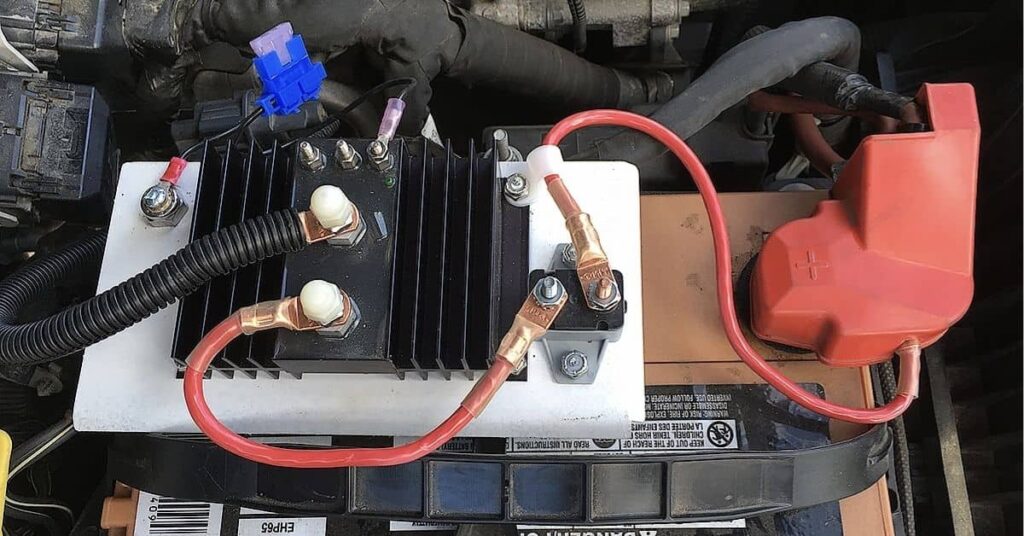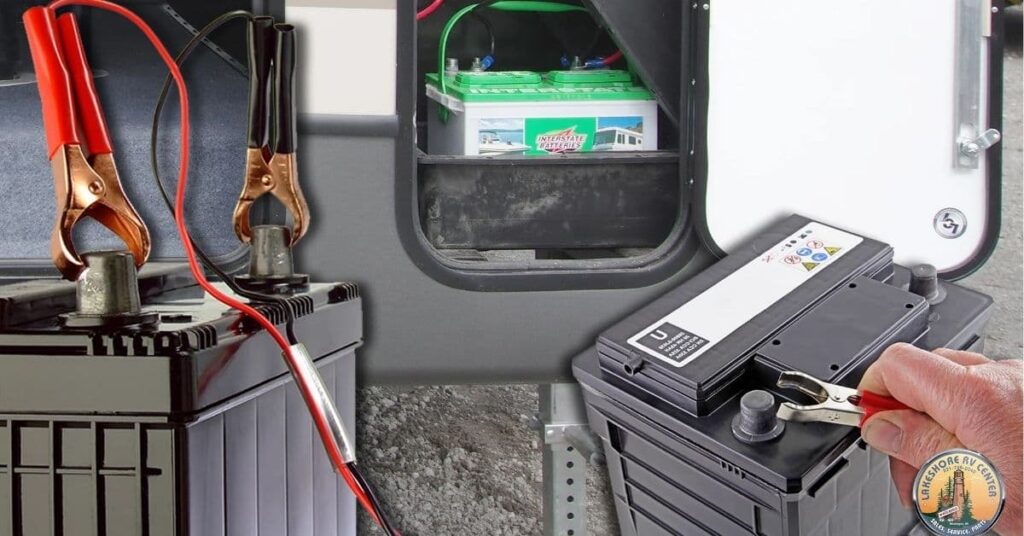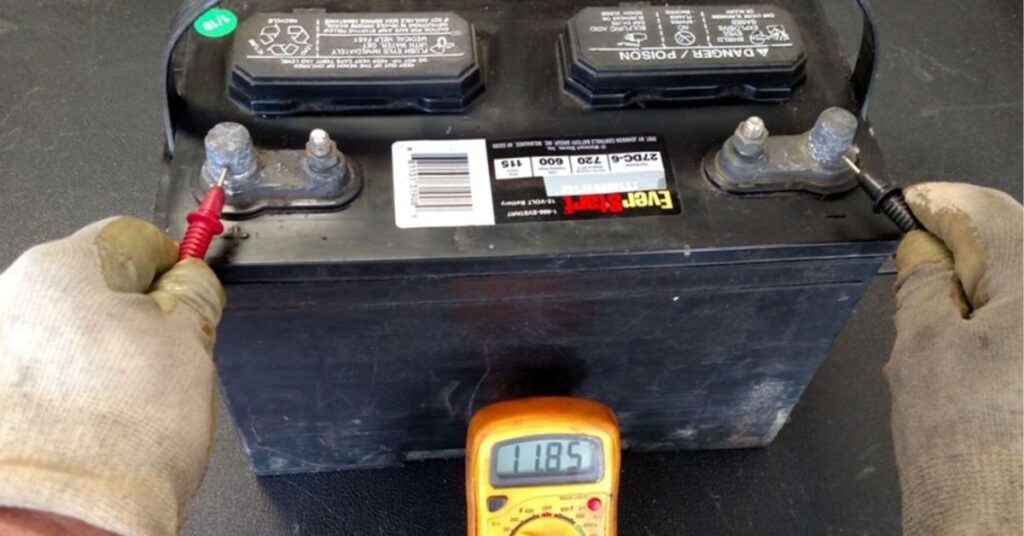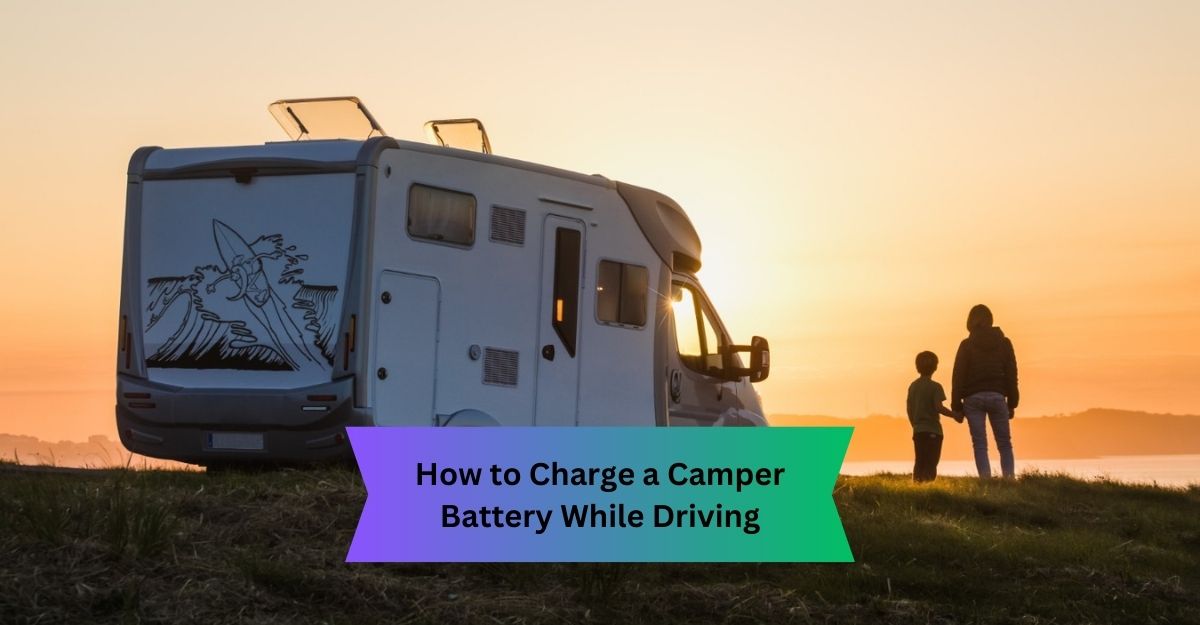To charge a camper battery while driving, install a battery isolator or DC to DC charger to prevent draining the main battery. Ensure proper wiring, alternator capacity, and monitor voltage levels. Solar panels can supplement charging for greater efficiency.
Keeping your camper’s battery charged while driving is essential for a hassle-free trip. This guide explores the best methods to ensure your battery stays powered throughout your journey. Keep reading to learn how to set up a reliable charging system for your camper.
Necessary Tools and Equipment:
To keep your camper’s battery charged while driving, you’ll need a few essential tools and devices:
- Battery Isolator: This device ensures your camper’s battery charges while the engine runs, without draining the vehicle’s starting battery. It keeps both batteries independent, using the alternator to charge the camper battery.
- DC to DC Charger: This charger ensures your camper battery gets the correct voltage, especially for lithium or AGM batteries. It manages the charge efficiently, maintaining battery health.
- Wiring and Fuses: Proper wiring (typically 8-10 AWG) and fuses are essential for safe power transfer and protection against electrical faults, like overloads or short circuits.
- Solar Panels (Optional): Solar panels can supplement charging while parked, helping to keep the camper battery topped off, especially on sunny days.
Step-by-Step Guide:

1. Install a Battery Isolator or DC to DC Charger:
Start by installing a battery isolator or a DC to DC charger. This ensures the camper’s battery charges from the vehicle’s alternator without draining the main battery. Choose a reliable device to prevent damage to either battery. Follow the manufacturer’s instructions for proper installation.
2. Connect the Camper’s Battery to the Isolator or Charger:
Securely connect your camper’s battery to the isolator or charger. Use the correct wiring gauge and ensure all connections are tight to avoid any electrical issues. Double-check polarity to prevent short circuits. This step ensures proper charging while driving.
3. Ensure Proper Alternator Capacity:
Verify that your vehicle’s alternator can handle the added load of charging both batteries. If your alternator is too small, consider upgrading it to a higher-capacity model. An undersized alternator can lead to overheating or insufficient charging. Check the vehicle’s specifications for compatibility.
4. Monitor the Charging Process:
Monitor the charging process while driving to ensure everything is functioning properly. Use a battery monitor to check voltage and charging levels. This step will help prevent overcharging or undercharging, keeping both batteries in good condition. Regular checks ensure safe and efficient charging.
5. Test the System:
Test the system by checking the camper battery’s voltage after a test drive. Ensure the battery has charged adequately and the system works as intended. If the voltage is too low, troubleshoot connections or the charger. Regular testing ensures the system remains reliable on the road.
Best Ways to Charge:

1. Use a DC to DC Charger:
A DC to DC charger efficiently converts your vehicle’s voltage to the correct level for the camper battery. This ensures safe, reliable charging, especially for lithium or AGM batteries. It prevents overcharging and extends battery life.
2. Install a Solar Panel System:
Solar panels help charge the camper battery during daylight, especially when parked. They supplement the vehicle’s power system, reducing dependency on the engine and improving overall energy efficiency. Ideal for off-grid camping.
3. Utilize the Vehicle’s Alternator:
The alternator charges the camper’s battery while driving, using the energy generated by the engine. It provides a convenient and continuous power source for long trips. Ensure your alternator has enough capacity for both batteries.
4. Ensure Proper Wiring and Fuses:
Using the correct wiring and fuses ensures safe power transfer and protects against electrical faults like short circuits or overloads. Properly sized wires prevent overheating and loss of power. Always double-check your connections for safety.
5. Monitor Voltage Levels Regularly:
Regular voltage checks help ensure the camper battery is charging properly. This prevents issues like overcharging or undercharging, which can damage the battery. Monitoring ensures safe, consistent power for your camper’s electrical needs.
Common Mistakes to Avoid:
Charging a camper battery while driving is straightforward, but there are a few common mistakes to avoid:
- Using Incorrect Wiring or Fuses: Using wires that are too thin or fuses that are too high can lead to overheating, short circuits, or even fires. Always use the proper gauge wires and correctly rated fuses to ensure safe power transfer.
- Overloading the Alternator: Relying too heavily on the vehicle’s alternator to charge both batteries can overload the system, causing the alternator to overheat or fail. Ensure your alternator has enough capacity to handle the added load.
- Neglecting Battery Compatibility: Not all chargers are suitable for every type of battery. Ensure your charger is compatible with your camper’s battery type (lithium, AGM, etc.) to avoid damaging the battery or reducing its lifespan.
- Failing to Monitor Charging Voltage: Ignoring regular voltage checks can lead to overcharging or undercharging, both of which can shorten battery life or cause system malfunctions. Monitor the voltage regularly to maintain proper charging levels.
- Improper Installation of Charging Equipment: Improper installation of chargers, isolators, or solar panels can result in inefficient charging or damage to the system. Follow manufacturer instructions carefully to ensure everything is set up correctly and safely.
Essential Camper Battery Maintenance for Longevity:

To ensure your camper battery remains in optimal condition, regular maintenance and monitoring are essential. Here’s how to maximize its lifespan:
- Clean Battery Terminals: Corrosion can disrupt the flow of power. Clean terminals periodically using a baking soda and water mixture to neutralize acid buildup.
- Check Fluid Levels: For flooded lead-acid batteries, monitor fluid levels and top them up with distilled water as needed to prevent damage.
- Inspect Cables and Wiring: Look for wear, fraying, or damage in cables. Damaged wiring can cause electrical issues or shorts—replace faulty wires immediately.
- Monitor Battery Voltage: Install a battery monitor to track voltage and charging levels in real-time. This ensures the battery isn’t overcharged or undercharged, which can harm its longevity.
- Leverage Smartphone Apps: Many modern charging systems sync with apps, providing alerts when voltage levels are too high or low, preventing potential damage.
FAQ’s
1. How can I charge my camper battery while driving?
Install a battery isolator or a DC to DC charger to ensure your camper’s battery charges from your vehicle’s alternator while driving, without draining the main battery.
2. Do I need to upgrade my alternator?
If your vehicle’s alternator is undersized, it may struggle to charge both batteries. Upgrading to a higher-capacity alternator ensures efficient charging.
3. Can solar panels help charge the camper battery?
Yes, solar panels supplement charging while parked, especially on sunny days, reducing reliance on the engine and enhancing energy efficiency.
4. What size wiring should I use?
Use 8-10 AWG wiring to ensure safe power transfer. The correct gauge prevents overheating and ensures efficient charging.
5. How often should I monitor my camper’s battery voltage?
Regular voltage checks are essential to avoid overcharging or undercharging, which can damage the battery. Monitoring ensures safe and reliable power.
Conclusion:
Maintaining a charged camper battery while driving requires careful planning and the right equipment, such as a battery isolator, DC to DC charger, and solar panels. By ensuring proper wiring, monitoring voltage, and avoiding common mistakes, you can keep your camper’s electrical system running smoothly, enhancing your travel experience.
